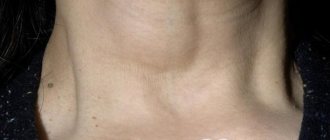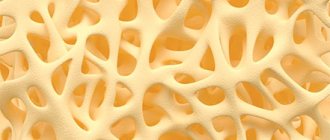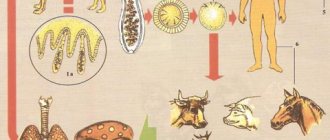Terminology
First you need to understand what exactly we are talking about. Therefore, you will have to understand the terminology. So, manic psychosis is, first of all, a serious mental disorder, which is mainly accompanied by symptoms such as hallucinations, delusions, and inappropriate behavior.
It is also worth noting that many people know what manic-depressive psychosis is (this concept is more common among the masses, and is also more often mentioned in various kinds of films and fiction). The manic phase is also accompanied by a depressive state, and its specific symptoms and manifestations are recorded.
The mechanism of the onset and development of the disease
To date, it has not been possible to accurately identify the factors leading to the development of bipolar disorder. The first symptoms of the disease may appear early (at 13-14 years), but the main risk groups are people aged 20-30 years and women during menopause. It has also been found that women suffer from this disorder 3 times more often than men. The main causes of manic-depressive syndrome include:
- genetic predisposition. Many scientists link the transmission of this disease to the X chromosome;
- characteristics of a person's personality. People prone to melancholy, psychasthenia or cyclical mood changes suffer from the syndrome much more often than others;
- hormonal changes that occur during puberty, during menopausal changes in both men and women;
- the risk of the disease increases the tendency to postpartum depression;
- endocrine diseases, for example, problems with the thyroid gland;
- various brain lesions - injuries, hemorrhages or tumors.
Endocrine diseases can lead to manic-depressive syndrome
The disorder can also be caused by factors such as nervous tension, serotonin imbalance, the presence of cancer, poisoning with various substances, drug use and much more.
Most of the prerequisites are of a clear physiological nature, which makes the consequences visible to the eye also indicators of changes within the body.
About a manic attack
As mentioned above, manic psychosis is always accompanied by mania. What exactly is this? In this case, the patient’s activity and initiative increase, his mood is always upbeat, and he is interested in almost everything. Thinking also speeds up, but since a person cannot grasp everything, glitches begin, jumping from one moment to another. At this stage, a person already becomes unproductive. All basic needs also increase: food, intimate relationships. But very little time is allocated for sleep - no more than 3-4 hours per day. During an attack, people want to communicate with everyone and help many people. Because of this, patients often make new acquaintances, and often have unplanned sexual relationships with new friends. Patients can either leave home themselves or bring new, complete strangers.
It should also be noted that if a patient has a manic psychosis, he tends to overestimate his capabilities. Such people often get involved in politics or social activities. They may also become addicted to alcohol or psychotropic substances. The behavior may be completely uncharacteristic (the person behaves completely differently than in moments of a normal state), and the patient’s next step cannot be predicted.
Symptoms
Describing depressive-manic syndrome, most authors identify three main stages in the development of this disease:
1) initial manifestations, in which shallow affective disorders predominate;
2) climax, at which the depth of the disorders is greatest;
3) reverse development of the condition.
All these phases most often develop gradually, but acute forms of the disease have also been noted. In the early stages, individual changes in the patient’s behavior can be noted, which should alert loved ones and make them suspect that he is developing a depressive syndrome.
As a rule, the patient begins to get up early and cannot concentrate on one thing, which is why he ends up with many things that have been started but never completed. Changes in his character are noted: irritability appears, outbursts of anger are frequent, and attempts on his part to attract the attention of others are obvious.
The next stage has more pronounced mental disorders. The patient, as a rule, becomes illogical in his reasoning, speaks quickly, incoherently, his behavior becomes more and more theatrical, and his attitude towards criticism takes on a painful connotation. The patient periodically surrenders to the power of melancholy and deep sadness, quickly gets tired and noticeably loses weight.
And the stage of depression that comes after this provokes in him a complete withdrawal into himself, slowness of speech and movements, obsessive thoughts about his own worthlessness, insolvency and, ultimately, about suicide as the only way out of this situation. The patient sleeps poorly, does not feel rested, wakes up late and constantly experiences a hypertrophied feeling of anxiety. By the way, this is also noticeable in the patient’s face - his muscles are tense, and his gaze becomes heavy, unblinking. The patient may be in a daze for a long time, looking at one point, or, in some situations, rush around the room, sobbing and refusing to eat.
About behavior in case of unipolar manic psychosis
Patients in the event of a manic attack are not aware of their actions. Behavior may be ridiculous and uncharacteristic. They experience a strong surge of energy, which at this stage does not surprise them at all. The so-called Napoleon complex is often observed, that is, ideas of greatness and high origin arise. At the same time, even despite increased activity and nervous tension, such people treat others as positively as possible. But sometimes there may be mood swings, outbursts of emotions, which are often accompanied by irritability.
It should also be noted that this stage develops very quickly. It only takes 4-5 days. The duration may vary, but on average it is 2.5-4 months. The patient recovers from this condition within a couple of weeks.
Bipolar depression - symptoms
Some people suffering from this disease have clear, sudden mood swings: a period of mania gives way to depression, each phase lasting several months. There may be a long period of stability between them. Some patients spend months or years in each period. With bipolar depression, symptoms depend on the episode the person is experiencing.
Signs of a manic period:
- abnormally elevated mood;
- excessive nervousness;
- increased activity;
- euphoria;
- excessive self-confidence;
- decreased need for sleep;
- excessive talkativeness;
- impaired concentration;
- difficulty making decisions.
During a depressed period, the patient often experiences suicidal thoughts.
Signs of the depressive phase:
- depressed mood (feeling sad, hopeless);
- pronounced loss of interest in life;
- weight fluctuations (loss or gain);
- insomnia or excessive sleepiness;
- fatigue;
- slow reactions;
- feelings of worthlessness or inexplicable guilt;
- cognitive impairment;
- indecision;
- suicidal thoughts or suicide attempts.
Some patients experience hypomania. This phase is similar to mania, but its symptoms are less intense. During hypomania, mood does not increase excessively.
Course of the manic phase
Stages of the manic phase of bipolar disorder.
The manic phase of bipolar disorder can last a week or more. During this period, a person is in an extremely high mood, feels energetic and creative. The patient may also experience irritability. Mania is characterized by risky behavior (substance abuse, sexual promiscuity, reckless spending of money).
Due to the patient’s behavior during this period, problems at work and difficulties in relationships may arise. Mania can lead to psychosis. In this case, the patient ceases to adequately perceive reality, and this affects his behavior. Psychosis may require hospitalization.
The course of the depressive phase
During this period, the patient is in a state of extremely depressed mood, feels apathy and severe sadness. In severe cases, the patient thinks about suicide and tries to commit suicide. During this phase, some people develop psychosis.
In bipolar disorder, the depressive phase lasts at least 2 weeks, then the depression passes.
Manic psychosis without main symptom
In 10% of patients, it happens that manic psychosis passes without mania itself. In this case, the patient experiences an increased reaction rate, as well as motor agitation. In this case, thinking slows down rather than speeds up, but concentration is at an ideal level. Increased activity in this type of manic psychosis is very monotonous. However, the patient does not feel joy. There is also no surge of strength or euphoria. The duration of such psychosis can even reach 1 year.
Depressive phase of the syndrome
It should be noted that while the described mental disorder is occurring, the depressive stage occupies most of the time of the illness; it is characterized by certain symptoms:
- decreased background mood with a feeling of persistent melancholy, which is often accompanied by real feelings of malaise: heaviness in the chest and head, a burning sensation behind the sternum or in the pit of the stomach, weakness and lack of appetite;
- the patient’s thought processes are slow, the ability to concentrate on reading, writing or working at the computer is lost;
- The patient has slow speech and movements, a general appearance of sleepiness, apathy, and obvious indifference to what is happening around him.
By the way, if the depressive phase is left unattended, it can develop into a severe state of stupor - complete immobility and silence, from which it is quite difficult to remove the patient. At the same time, he does not eat, does not perform natural needs and does not react in any way to words addressed to him.
During the disease described, depression is often not only mental, but also physical. In this case, the patient experiences dilated pupils, heart rhythm disturbances, spastic constipation develops due to spasms of the gastrointestinal tract muscles, and in women, menstruation most often disappears during the depressive phase (so-called amenorrhea).
Differences between mono- and bipolar psychoses
What is the difference between unipolar and bipolar manic-depressive psychosis? First of all, the duration. In the first case, such conditions in the patient may be protracted. That is, the duration of manic psychosis can range from 4 months to 1 year. The process of “entry” and “exit” also differs. In monopolar psychosis they are long-term, gradual, and increasing. With bipolar – rapid. It should also be noted that at the onset of the disease, unipolar psychosis has a seasonal manifestation and occurs mainly in spring or autumn. Later this pattern is lost.
Treatment of manic-depressive disorder
The main goal of treating the syndrome is to achieve remission and increase the duration of intermission periods. Therapy is divided into:
Drug treatment.
Medications for bipolar disorder should be prescribed very carefully. Doses should be sufficient to improve the patient's health status, and not transfer it from one phase to another:
- in a manic state, the patient is prescribed neuroleptics: Aminazine, Betamax, Tizercin and others. They reduce manic symptoms and effectively calm;
- in depression - antidepressants: Afobazol, Misol, Tsitol;
- During intermissions, the patient’s condition is maintained with special drugs that stabilize mood - mood stabilizers.
About bipolar manic psychosis
Separately, we also need to consider manic bipolar psychosis. This is another type of this disease. It should be noted that most often another term is used in everyday life, namely “manic-depressive psychosis.” What is it? The peculiarity of this condition is that the patient alternates between attacks of manic and depressive states. Basically, this disease manifests itself around the age of 30. And it most often occurs in those who have had similar diseases in their family.
What is manic depression
Manic depressive disorder is a mental illness in which the patient experiences cyclical changes in mood, problems with thinking and behavior.
A person periodically remains in several states:
- Mania. During it, the patient feels energetic and abnormally happy. He makes rash or impulsive decisions.
- Depressive episode. A person has an irresistible desire to cry, he experiences a feeling of hopelessness, and has a negative outlook on life.
- Hypomania. It is a less severe form of mania. During this period, the patient is active, but not excessively.
There are several types of the disease. These may include mania or hypomania and depression.
The main types of the course of manic-depressive psychosis.
The following types of disease are distinguished:
- Type I disorder. Diagnosed with at least 1 episode of mania. It may precede or follow hypomania or depressive episodes. In some cases, mania causes psychosis (MDP). Such patients experience a disconnect from reality.
- Type II disorder. The diagnosis is made if there is at least 1 major depressive episode and a period of hypomania. However, the patient never experienced mania.
- Cyclothymic disorder. It is characterized by a mild course: periods of hypomania and depression occur within 2 years and can last several days.
- Other types. These include disorders resulting from alcohol abuse, drug addiction, or health problems (Cushing's disease, multiple sclerosis, stroke).
The disease begins to manifest itself between the ages of 15 and 24 years. It persists throughout life. The disease cannot be completely cured, you can only influence the symptoms.
The pathology is difficult to diagnose in children and adolescents: their mood swings may be associated with stress and age-related changes. Children and adolescents have distinct phases of the disorder, but their presentation may differ from that of adults. In some children, mood swings may change dramatically during periods of mania and depression.
Psychosis with a predominance of depressive states
If the patient has a predominant depressive phase of manic-depressive psychosis, the following conditions will be characteristic:
- The first attacks will be very acute. Suicidal feelings may predominate in patients.
- Depressive psychosis is seasonal and worsens during periods of vitamin deficiency.
- A person’s mood is always disgusting; there is an emptiness in the soul.
- Motor and mental activity slow down, information is difficult to assimilate.
- Sleep is unstable, intermittent. The patient often wakes up at night.
- There are ideas of self-accusation and the fall. Also, a person is constantly afraid for his health, seeing mortal danger in everything.
- The duration of the period is on average three months, maximum six months.
Treatment methods
Treatment for manic-depressive psychosis includes medications, psychotherapy, and traditional methods to relieve symptoms.
The course of treatment is determined only by the attending physician, which is associated with the possibility of worsening the patient’s condition during self-treatment. The types of medications and their dosages are always individual, so it is strictly not allowed to prescribe courses of medications without a specialist.
Medications
Medications for bipolar disorder include:
- Lithium preparations . Psychotropic lithium drugs are taken during periods of mania. Its action is aimed at reducing impulsivity and aggression, but the effect begins to appear only on the 5th day of administration, so the drug is used as an additional remedy in combination with other medications.
- Valproic acid . The drug is taken during periods of acute mania. The results of taking the drug showed its high effectiveness on a par with lithium, if you start taking it with a saturated dose of 20 mg/kg. When used correctly, the medicine shortens the duration of affective manic periods.
- Carbamazepine . The drug is used in both manic and depressive phases of the disorder. It acts faster and more effectively than lithium, but slower than antipsychotics, so treatment with carbamazepine is carried out together with other drugs.
- Lamotrigine . The drug, unlike lithium and valproic acid, is effective for treating depressive periods. The drug is an antiepileptic, and its mechanism is aimed at blocking excess releases of excitatory amino acids.
- Quetiapine . The drug is an antipsychotic and is recommended for short-term treatment during manic periods. Its action is aimed at combating the negative symptoms of acute mania; it, unlike lithium, has much fewer side effects.
Traditional methods
Traditional methods for manic-depressive psychosis are not the main treatment; they are taken as an additional way to alleviate the symptoms of the disorder, and specific traditional methods must be agreed with the attending physician.
Folk remedies for bipolar affective disorder:
- Tea to reduce anxiety. This tea recipe helps relieve stress, headaches and improve digestion. To prepare the drink, you need to mix the following ingredients in the following proportions: 0.25 lemon balm; 0.5 parts mint; 4 pinches of lemon zest; 0.25 parts anise hyssop; 1 stem of lemongrass; 1 tbsp. pour 1 liter of boiling water over the resulting mixture and let the tea brew for no more than 10 minutes. The resulting tea can be drunk throughout the day.
- Blooming Sally . The herbal tincture recipe helps relieve a common symptom of the disorder - insomnia. To prepare the solution, you need to brew 15 g of Ivan tea and infuse it for at least 9 hours. Next, you need to strain the future drink and drink it before bed.
- Chamomile herbal tea. Chamomile is a proven and safe remedy for depression. The product helps reduce irritability and get rid of insomnia. To prepare tea you need to take 1 tbsp. chamomile flowers, pour 1 liter of boiling water.
- Soothing oil . The product will help reduce irritability and increased excitability. To use, you need to mix 200 g of flowering mignonette and 0.5 liters of sunflower oil. Infuse the resulting liquid for about 2 weeks in a cool room, shaking occasionally. After time, use the solution by rubbing a small amount into your temples no more than 2 times a day.
- Lavender syrup . This remedy will be useful during the treatment of a depressive period; Lavender helps reduce anxiety, migraines and prevent gastrointestinal diseases. To prepare the syrup, you need to take fresh lavender tops (about 200 g) and pour 0.5 liters of boiling water over them. Let the resulting mixture brew for about 1 day, and after the time has elapsed, strain it. Boil the resulting infusion and pour it over the newly taken 200 g of lavender tops, let the mixture brew again. Add 0.5 kg of sugar to the resulting liquid, mix thoroughly and cook over low heat until thick. Apply the resulting syrup several times a day.
Other methods
Manic-depressive psychosis is, first of all, a mental disorder with which a psychiatrist works. Along with medicinal and traditional methods, the patient needs to undergo courses of psychotherapy, thanks to which it becomes possible to cure the disorder. There is no universal method that is suitable for all patients with manic-depressive psychosis.
But the most famous for their effectiveness are:
- Cognitive behavioral therapy . It allows you to identify and study your manic ideas during periods of mania and suicidal tendencies during the depressive phase. Identifying cognitive errors in your thinking during periods of mania and depression is an important element of cognitive behavioral therapy; this helps the patient independently analyze his symptoms, which means it makes it easier for him to deal with them and control his actions.
- Dialectical behavior therapy . It is a modified form of cognitive behavioral therapy adapted for the treatment of mood disorders. Therapy is aimed at identifying your emotions, understanding them and living them. The basis of working with patients is aimed at understanding and learning basic life skills: conscious attention; control over the experience of suffering; the ability to regulate your emotions; gaining healthy communication skills.
- Family therapy, art therapy. These therapies are complementary, but useful for working through your emotions and relationships with people. Bipolar affective disorder is a difficult disease for the patient’s loved ones to accept, so family therapy will help establish contact between the patient and his family. Art therapy is a way for the patient to express his emotions through creativity, which is an important additional part of basic psychotherapy.
Manic-depressive psychosis can be treated with family art therapy.
- Therapy of acceptance and responsibility. There are six key principles used in therapy:
- Division (non-merger). The principle lies in the ability to examine your thoughts from the outside, trying to exclude involvement and emotional ties to them. Separation from negative thoughts and the ability to observe them helps to eliminate their ability to greatly affect the patient's condition.
- Adoption. Here you need to give space to your feelings, obsessive desires and unpleasant feelings. The principle is the absence of suppression and struggle against them; the patient needs to accept the presence of negativity in himself in order to work productively with the doctor.
- Contact with the present moment. In this case, the patient’s focus shifts from problems of the past and worries about the future to the “here and now” state.
- Observer position. The principle allows you to look at your experiences from the observer’s side, move away from the emotional component of problems and consider them with the greatest objectivity.
- Values. This component of therapy helps you turn to yourself and understand your deepest values and aspirations.
- Proactivity. The principle helps set goals based on identified values and highlight ways to achieve them.
Diagnosis of the disease
How is manic-depressive psychosis and schizophrenia recognized? So, doctors define the disease in two main directions:
- First you need to prove the existence of psychosis itself.
- Next, you must definitely decide on its type: is it mono- or bipolar psychosis.
Doctors take one of two assessment systems as the basis for their definition: ICD - that is, the world classification of diseases, or the no less widespread DSM - criteria created by the US Psychiatric Association.
It is also important for doctors to identify the presence of certain symptoms in a patient. In this case, they use various specialized questionnaires:
- Mood Disorders Questionnaire - a questionnaire about depressive disorders.
- Young Mania Rating Scale.
- Bipolar Spectrum Diagnostic Scale, that is, an assessment of the bipolar spectrum.
- Beck's scale.
Diagnosis of manic-depressive syndrome
Diagnosing this disease requires a comprehensive approach. It is necessary to collect detailed information about the patient’s life and behavior, and analyze deviations: their severity, frequency and duration. It is important to find a certain pattern in behavior and deviations, which manifests itself only with sufficiently long observation.
First of all, when diagnosing, it is necessary to exclude the occurrence of bipolar disorder due to physiological problems or drug use. This will cure addictions, and therefore the syndrome.
To identify manic-depressive syndrome, the following methods are used:
- Survey. The patient and his family answer questions about the patient's life, symptoms, and mental health problems in other family members.
- Testing. With the help of special tests, it is determined whether the patient has addictions, what his psychological state is, and much more.
- Medical examination. Aimed at determining the patient's physical health status.
Timely diagnosis will speed up treatment and protect against complications, both physiological and mental. Without treatment, a patient in a manic phase can become dangerous to other people, and in a depressed phase - to himself.
Treatment of this disease
Having figured out what manic-depressive psychosis is, the treatment of this disease is what is also important to talk about. So, initially it should be noted that with this problem, the understanding and support of relatives is very important. After all, it is necessary to prevent suicidal tendencies in the patient. You also need to monitor the person in order to seek doctor’s help in time. What else can loved ones do? The patient needs to devote a lot of time: periodically walk together, arrange days of joint rest, involve him in homework, monitor the intake of medications, as well as provide comfortable living conditions and periodic visits to sanatoriums to maintain general health.
But still, the most important thing is the drug treatment of manic psychosis. The choice of drug should be completely entrusted to doctors; self-medication in this case is unacceptable. What medications can patients take?
- Normotimics. These are medications that normalize and stabilize the patient’s mood. Examples of drugs: Lithium carbonate, Carbamazepine, Lamotrigine.
- If a patient has depressive psychosis, doctors may also prescribe antidepressants. Examples of drugs: Olanzapine, Sertraline, Aripiprazole.
Treatment
For each stage in which manic-depressive syndrome is located, treatment is selected separately. So, if in a depressed state there is a predominance of inhibition of reactions, the patient is prescribed drugs that have a stimulating effect (“Melipramine”). If there is a pronounced feeling of anxiety, sedatives “Amitriptyline” and “Triptisol” are used.
In cases where the feeling of melancholy has both physical manifestations and is combined with lethargy, the use of psychotropic medications is allowed.
Manic mental states are treated with the neuroleptics Aminazin and Tizercin, administered intravenously, and Haloperidol is administered intramuscularly. To prevent the occurrence of new attacks, the drugs “Carbamazepine” (“Finlepsin”) and lithium salts are used.
Depending on the patient’s condition, he is also prescribed electroconvulsive therapy or thermal conditions (sleep deprivation for a couple of days and dosed fasting). In such situations, the body experiences a kind of shake-up, and the patient feels better.
MDP with low-grade schizophrenia
Sluggish schizophrenia is schizophrenia with minor manifestations. This concept is sometimes identified with “schizotypal personality disorder” or borderline personality disorder.
Because MDP can present in different ways and is a group of mental illnesses, it is clinically similar to schizophrenia, especially in the presence of hallucinations and delusions. A number of studies have proven the assumption of common genes of these diseases, therefore, a common etiology and the reason for the similarity of symptoms.
Sometimes affective disorder (MDD) can be combined with symptoms of low-grade schizophrenia (hallucinations and delusions) simultaneously during one exacerbation. In this case, the diagnosis is considered - “Schizotypal disorder” ICD-10 F25. It can also have several subtypes - manic, depressive or mixed, depending on the background in which the diagnosis was made.
Sluggish schizophrenia is a mildly progressive disease
How does manic-depressive psychosis manifest?
Symptoms of manic-depressive psychosis depend on the phase of the disease. The disease can manifest itself in manic and depressive forms.
Symptoms of the manic phase
The manic phase can occur in the classic version and with some peculiarities.
In the most typical cases, it is accompanied by the following symptoms:
- inappropriately joyful, exalted and improved mood;
- sharply accelerated, unproductive thinking;
- inappropriate behavior, activity, mobility, manifestations of motor agitation.
The beginning of this phase in manic-depressive psychosis looks like a normal burst of energy. Patients are active, talk a lot, try to take on many things at the same time. Their mood is high, overly optimistic. Memory sharpens. Patients talk and remember a lot. They see exceptional positiveness in all events that take place, even where there is none.
Excitement gradually increases. The time allocated for sleep is reduced, patients do not feel tired.
Gradually, thinking becomes superficial; people suffering from psychosis cannot focus their attention on the main thing, they are constantly distracted, jumping from topic to topic. In their conversation, unfinished sentences and phrases are noted - “language is ahead of thoughts.” Patients have to constantly return to the unsaid topic.
The patients' faces turn pink, their facial expressions are excessively animated, and active hand gestures are observed. There is laughter, increased and inadequate playfulness; those suffering from manic-depressive psychosis talk loudly, scream, and breathe noisily.
Activity is unproductive. Patients simultaneously “grab at” a large number of things, but do not bring any of them to a logical end, and are constantly distracted. Hypermobility is often combined with singing, dance movements, and jumping.
In this phase of manic-depressive psychosis, patients seek active communication, interfere in all matters, give advice and teach others, and criticize. They exhibit a pronounced overestimation of their skills, knowledge and capabilities, which are sometimes completely absent. At the same time, self-criticism is sharply reduced.
Sexual and food instincts are enhanced. Patients constantly want to eat, sexual motives clearly appear in their behavior. Against this background, they easily and naturally make a lot of acquaintances. Women begin to use a lot of cosmetics to attract attention.
In some atypical cases, the manic phase of psychosis occurs with:
- unproductive mania - in which there are no active actions and thinking does not accelerate;
- solar mania – behavior is dominated by an over-cheerful mood;
- angry mania - anger, irritability, dissatisfaction with others come to the fore;
- manic stupor - a manifestation of fun, accelerated thinking combined with motor passivity.
Symptoms of the depressive phase
There are three main symptoms in the depressive phase:
- painfully depressed mood;
- sharply slow pace of thinking;
- motor retardation up to complete immobilization.
The initial symptoms of this phase of manic-depressive psychosis are accompanied by sleep disturbances, frequent awakenings at night, and inability to sleep. Appetite gradually decreases, a state of weakness develops, constipation and pain in the chest appear. The mood is constantly depressed, the patients' faces are apathetic and sad. Depression increases. Everything present, past and future is presented in black and hopeless colors. Some patients with manic-depressive psychosis have ideas of self-blame, patients try to hide in inaccessible places, and experience painful experiences. The pace of thinking slows down sharply, the range of interests narrows, symptoms of “mental chewing gum” appear, patients repeat the same ideas, in which self-deprecating thoughts stand out. Those suffering from manic-depressive psychosis begin to remember all their actions and attach ideas of inferiority to them. Some consider themselves unworthy of food, sleep, respect. They feel that doctors are wasting their time and unreasonably prescribing medications for them, as if they are unworthy of treatment.
Please note: sometimes it is necessary to transfer such patients to forced feeding.
Most patients experience muscle weakness, heaviness throughout the body, and they move with great difficulty.
With a more compensated form of manic-depressive psychosis, patients independently look for the dirtiest work for themselves. Gradually, ideas of self-blame lead some patients to thoughts of suicide, which they may well turn into reality.
Depression is most pronounced in the morning hours, before dawn. By evening, the intensity of her symptoms decreases. Patients mostly sit in inconspicuous places, lie on beds, and like to lie under the bed, as they consider themselves unworthy to be in a normal position. They are reluctant to make contact; they respond monotonously, slowly, without unnecessary words.
The faces bear the imprint of deep sorrow with a characteristic wrinkle on the forehead. The corners of the mouth are downturned, the eyes are dull and inactive.
Options for the depressive phase:
- asthenic depression - in patients with this type of manic-depressive psychosis, ideas of their own callousness in relation to loved ones dominate, they consider themselves unworthy parents, husbands, wives, etc.
- Anxious depression – occurs with the manifestation of extreme degrees of anxiety and fear, leading patients to suicide. In this state, patients can fall into a stupor.
Almost all patients in the depressive phase experience Protopopov's triad - rapid heartbeat, constipation, dilated pupils.
Symptoms of disorders in manic-depressive psychosis from internal organs :
- high blood pressure;
- dry skin and mucous membranes;
- lack of appetite;
- in women, disorders of the menstrual cycle.
In some cases, MDP is manifested by dominant complaints of persistent pain and discomfort in the body. Patients describe the most varied complaints from almost all organs and parts of the body.
Please note: some patients try to resort to alcohol to alleviate complaints.
The depressive phase can last 5-6 months. Patients are unable to work during this period.
Cyclothymia is a mild form of manic-depressive psychosis
There are both a separate form of the disease and a milder version of TIR.
Cyclotomy occurs in phases:
hypomania – the presence of an optimistic mood, an energetic state, active activity. Patients can work a lot without getting tired, have little rest and sleep, their behavior is quite orderly;
- subdepression is a condition with a deterioration in mood, a decline in all physical and mental functions, and a craving for alcohol, which disappears immediately after the end of this phase.
How do you become maniacs?
Surely, everyone is interested in the question of what motivates these people and how they came to such a life. Experts have found that the most common reasons for the development of manic tendencies are severe childhood traumas and complexes, as well as genetic predisposition. In some cases, people become maniacs after brain damage as a result of injury.
Such disorders are aggravated by the use of alcohol and drugs. But there is no need to confuse immoral behavior with manic syndrome. In other words, you should not suspect every drug addict or immoral person. The percentage of potential maniacs is very small, and even fewer people realize their unhealthy fantasies.
Usually the victims of maniacs are physically weak people - children, young girls, old people. A maniac will not attack a strong and self-confident person. The exception may be a situation in which he can dominate this person.
First aid for acute manic psychosis
To avoid a possible threat to others, the patient should be taken away and isolated. It is necessary to remove all objects with which one can commit suicide.
For manic-depressive neurosis, the help of a psychiatrist is necessary. You can try to convince the patient to see a doctor himself. If a person attempts to commit suicide or harm someone else, an emergency mental health team will need to be called.
It is important not to argue with the patient or make fun of him: this can provoke aggression. There is no need to develop delusional fantasies. If a person is delusional, you should grab onto any factual phrase in his speech and develop a conversation on this topic.
A calm environment should be created. Only close people who treat him kindly should be near the patient.
Types of bipolar disorder
The classification of bipolar disorder is quite diverse and includes various types of disease progression. The following main types are distinguished:
- bipolar disorder;
- unipolar disorder;
- periodic depression or periodic mania;
- circular bipolar disorder.
Bipolar disorder itself is a sequential change from the phase of depression to the phase of mania, with or without an interval of enlightenment of consciousness. If a period of a stable state is not observed, they speak of a circular type of disorder, when mania is replaced by depression, and then the manic phase begins again, and so on continuously.
Unipolar disorder is a condition in which a person is constantly “at one pole,” in a phase of mania or depression. Recurrent bipolar depression is a form of unipolar disorder that occurs episodically. In this case, episodes of depression are replaced by a period of mental stability, and there is no manic phase.
How to recognize a maniac by conversation?
People who have manic disorder are usually not emotional in everyday life. A person with iron self-control commands respect, but do not rush to admire the courage of your new acquaintance. If he talks about the difficult moments of his life with icy calm, this is an alarming signal. There is no sadness, regret or pain in his words. He talks about everything as if it happened to someone else. Maniacs do not like vivid metaphors and images, and are not friendly with humor. But they show increased interest in cause-and-effect relationships.
A person with manic tendencies is not interested in art and high truths. Usually he talks about lower needs - food, rest, sleep. You should also be wary of long conversations about money. Not all maniacs openly discuss the topic of sex. Some of them are ashamed of her, so they can give the impression of shy and too correct people.
Diagnostics
To determine the diagnosis, the classical method is used. The doctor observes the patient's behavior and questions him. To determine the presence of the syndrome, it is necessary to tell the truth.
- Having relatives with a similar disease.
- Possible early mental disorders.
- Possible injuries, previous operations.
- Status in society, behavior at work and at home.
It is important for the doctor to see the risk factors:
- presence of life problems;
- suicide attempts;
- taking medications, as well as alcohol dependence;
- chronic diseases.
How to treat at home
During the interictal period, patients fully recover and are functional. Therefore, it is important to properly train them on how to treat TIR at home. Between attacks, the main emphasis is on disease prevention. Patients are prescribed treatment with mood stabilizers - medications that stabilize mood around normal levels, and are also recommended to attend psychotherapeutic groups. There, the patient is taught skills to recognize and manage symptoms, help improve social interaction and adherence to medication.
What is TIR
Manic-depressive psychosis is a group of mental illnesses that occur cyclically with periodic depressive or manic attacks. During the periods between attacks, a person’s mental activity is completely restored. At this time, no studies will be able to distinguish the patient from a healthy person. Regardless of the severity of the disease, pronounced personality changes do not occur.
Often the disease develops against a background of general well-being and for no apparent reason at a young or mature age, but sometimes the first attack may be preceded by psychological trauma.
The frequency of mood changes may vary
It has been noted that the disease has a connection with the natural biorhythms of the body. It occurs more often in the spring-autumn period, and there is a connection with the monthly cycle in women and even with the circadian rhythm.
The development of depressive and manic phases are not related to each other. The duration, frequency and severity of these phases may vary. Sometimes transient atypical variants of attacks are observed. There is also a monopolar type of course, when the disease occurs with a single phase (usually depressive).
Since 1980, the term "manic-depressive psychosis" has been replaced by "bipolar affective disorder".
In ICD-10, all affective disorders are in a single class F3 (“manic episode”, “bipolar affective disorder”, “depressive episode”, etc.). In ICD-11, mental disorders are in section 6. It retained the subsection “Affective disorders”, represented by the groups “Bipolar or related disorders”, “Depressive disorders”, etc.
Currently, statistics on the prevalence of MDP indicate approximately 5-8 cases per 1000 population. The real prevalence of the disease is much higher than the official statistics. Different approaches to diagnosis, a large number of erased forms and the fact that people in the manic and hypomanic phases are convinced of the normality of their condition and do not consult a doctor (unlike a depressive attack), create difficulties in collecting accurate statistics.
The disease occurs in 0.07-7% of people, and the annual increase is approximately 1.25%.
Reasons for development
There are several theories explaining the occurrence of pathology.
Some researchers believe that the disease is genetic. People with one parent suffering from this disorder are more likely to get sick. If one of the parents had a unipolar form, the child will be sick with a 25% chance. If the father or mother had bipolar affective disorder, the probability is 50%. It is believed that the first episode occurs during sudden changes in life: during divorce, after childbirth, due to political and economic crises, after the death of someone close.
Another theory is based on constitutional predisposition. It is believed that this disease occurs more often in cyclothymics according to the Kretschmer classification. Such people are emotional, sociable, and quickly adapt to a new society.
Most experts adhere to the monoamine theory. According to this version, the development of mania occurs due to too high or too low the content of certain minoamines in the nervous tissue. The level of serotonin and norepinephrine is important: when there are too many of them, the appearance of a manic stage is noted. If the concentration of substances is low, depression will occur.
There is a version according to which the disease occurs due to endocrine disorders, a lack or excess of nutrients in the body. In addition, there is a version that the disorder occurs when circadian rhythms are disrupted.
Treatment of the syndrome
Only a psychotherapist or psychiatrist knows how to treat a patient. Too many forms, trends and characteristics of a particular person should be taken into account when selecting medications. For example, the possibility of drug overdose should be considered when working with patients with suicidal intentions.
For depression, the patient is prescribed antidepressants from different groups for each patient and under the strict supervision of a psychotherapist to prevent resistance to the drug. As accompanying drugs - tranquilizers, antipsychotics and sleeping pills. In some cases, sleep deprivation and psychotherapy are prescribed.
During the manic phase, treatment is carried out with lithium and antipsychotics.
Course of the manic phase
The severity is determined using the Young scale. It consists of 11 points, each of which requires an answer. The resulting sum of points serves to determine the severity of mania. It occurs in 5 main stages:
- Hypomanic.
- Severe mania.
- Manic frenzy.
- Motor sedation.
- Reactive.











